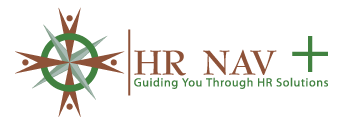I have had a retained search practice for 12 years after a career in corporate HR. My practice focuses on searches primarily in the manufacturing, oil/gas, building materials and EPCM sectors in both Canada and the United States.
I have a boutique search practice (code word for sole practitioner) and I decided from the beginning that I would conduct all phases of the search process including the research and initial contact with potential candidates. Though a lot of search firms would disagree with this approach, I always believed that research is critical and this should not be delegated to more junior associates who may not have even met the client. Since I am the one making the initial contact with all prospective candidates, I believe I can ensure that the employer brand is well represented. Often the first conversation with a prospective candidate will determine whether a candidate is interested in further discussions. How do I use LinkedIn?
Research
LinkedIn has been one of the most effective tools in my ability to identify top passive talent who may not be looking or generally do not regularly access job boards.. I use LinkedIn search capabilities to identify those candidates who meet the critical skills identified by the employer. It is especially useful when I am looking for a “needle in a haystack” which seems to be the type of searches where a client requests assistance. For example, a major manufacturing client was looking for a Senior bilingual HR Manager for its Nova Scotia operation—a rare commodity. LinkedIn allowed me to put in search criteria where I could identify anyone in Canada who had Nova Scotia roots such as having attended universities such as Dalhousie or Saint Mary’s. This enabled me to identify a short list of candidates either residing in Nova Scotia (few) to those willing to return back to Nova Scotia for a different opportunity. Similarly, for a Calgary client I was looking for a Project Manager with a certain chemical process background, fluent in Russian who had also worked in Kazakhstan. Ten years ago without LinkedIn and its advanced search capabilities finding those individuals would have been next to impossible.
Email Contact
I use LinkedIn inmail feature to send out a brief description of the opportunity to prospective passive candidates. I have to admit my response is low at about 20% rate, so in most cases it has to be combined with telephone call follow up. It reaffirms that passive candidates have to be convinced to explore opportunities with a compelling value proposition through a number of different channels.
LinkedIn Job Postings
If I decide to place a job ad, I only utilize LinkedIn which is far superior to the other job boards. The calibre of responses is far superior. In my last VP search about 25% of candidates I interviewed came as a result of the job posting. Interestingly, I have found better and more quality candidates responding to VP level opportunities than mid to lower level opportunities..
When I decide how to best utilize LinkedIn , I also look at these statistics which have come from recent surveys by LinkedIn and DMR (2013-2015 surveys).
- Millennials 15-34 using LinkedIn- 13%
- Percent of millenials who don’t know LinkedIn -45%
- Percent of professionals on LinkedIn (US) -About 1/3
- LinkedIn subscribers who use LinkedIn daily -13%
- LinkedIn subscribers who use monthly – 76%
- Percent of recruiters who use LinkedIn to vet candidates-94%
- Percent of LinkedIn subscribers who use Mobile App-40%
- Percent of LinkedIn subscribers who use Mobile App job search -40%
These statistics highlight that reaching millennials may require other avenues and that LinkedIn’s major strength is as a database source to identify talent but only as one tool in an overall strategy to communicate with potential candidates.
I would be interested in hearing your thoughts and opinions.
